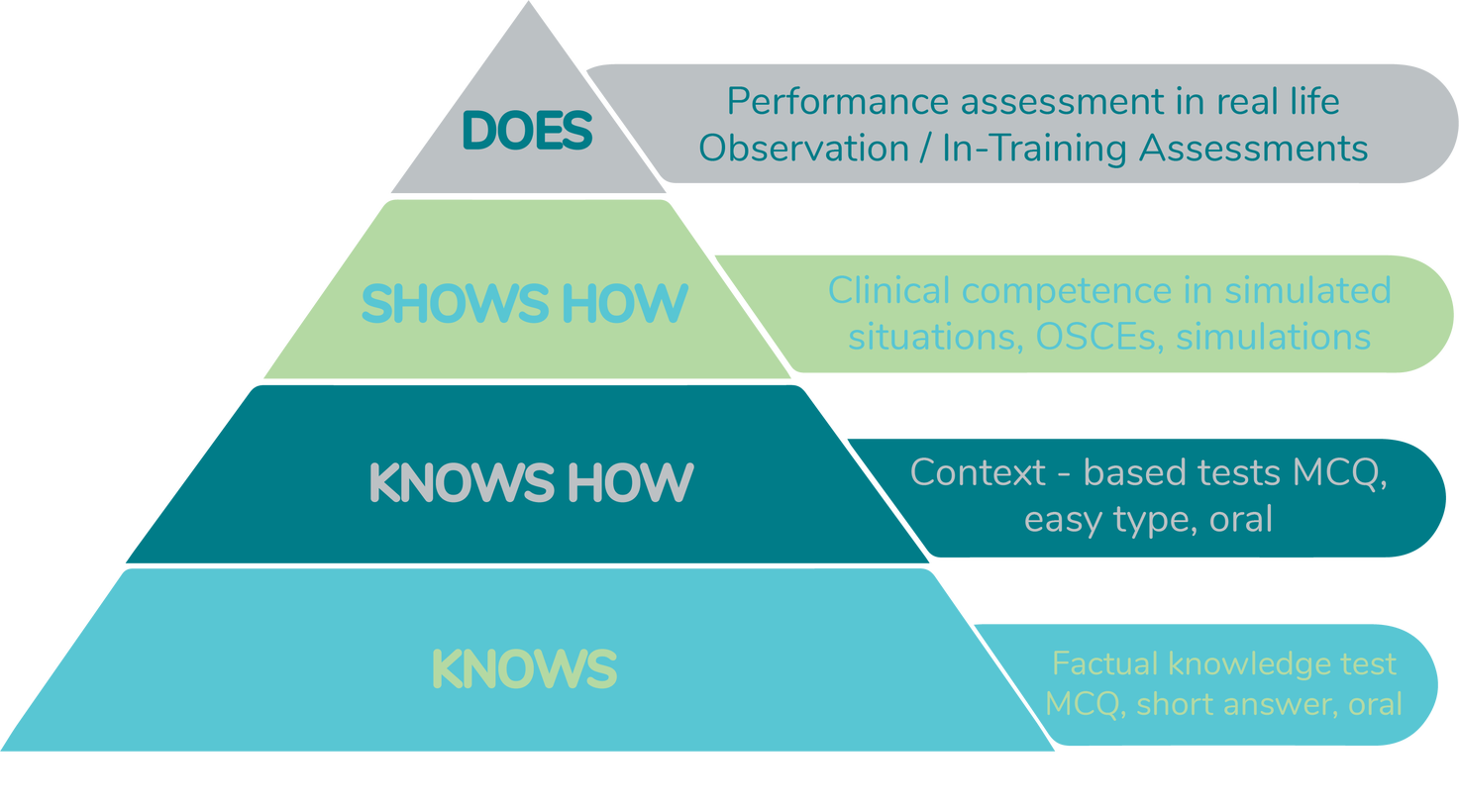Section 1 - Mentorship Programme / 1.4 Assessment and Competence
The aim of assessment is to map the student's progress towards a gold standard, and also provide the student with the tools to develop independent enquiry and reflection so they are capable of effective and meaningful lifelong learning.

Podcast
Formative and Summative Assessment
Formative – Formative and summative are not labels for different types or forms of assessment but instead describe how assessments are used. A task or activity is not formative unless the information it provides is used to progress learning.
Formative assessment is used to inform the subsequent teaching on a topic, and, as such, is conducted throughout the students’ period of study. Formative assessment is used as a feedback tool for the student. Clear feedback needs to be given about where they have done well, but also about where they need to improve. This should cover their practical skill, their knowledge and their attitudinal performance.

Figure 3: Formative assessment cycle
Summative - Summative assessments usually take place at the end of a learning module and provide students with a grade or indication of progress. They are more formal and used to measure achievement at a specific point in the year. They are used to determine whether the student is competent, which is important for the regulator
Assessing Competency
Competence is referring to an individual’s intentions or aptitude to engage in clinical activity, and competency is the behavioural performance during episodes of practice. Consequently, an assessment of competence might enable mentors to judge the personal capacity of students to involve themselves in care, while evaluating competency provides an opportunity to appraise directly students’ performance in applying knowledge, skills and attitudes during care activities.
Mentors can find the assessment of clear incompetence easier to identify because there is something tangible to observe and make a judgement about, as opposed to making decisions about the competence of students who may be on the borderline of achievement in clinical practice.
Millers Pyramid
Millers pyramid (Miller, 1990) models how competence and competency are linked. As a student progresses to a higher level of competency, they move up the pyramid. This is because the experience that they have gained has allowed them to transition from knowledge to action. In this way, students’ can be assessed on what they did, not just what they know

Figure 4: Millers Pyramid. (Miller, 1990)
Embedding Learning
Questioning: Questioning is an essential part of assessing a students’ performance and can be used as a feedback tool to identify gaps in knowledge or procedure.
Effective questioning is often described in terms of the abilities of the teacher to pitch the questions at an appropriate academic level for the student: too low and the learner may feel patronised; too high and the questions may not be understood by the learner. Directed questioning is essential for embedding deep learning.
Attitudes: It is important that a mentor imparts a professional attitude on the student. This stems from the responsibility to of a mentor as a role model. Professional attitude includes the way that tasks are approached, communication with patients and other member of the team, and physical appearance.
References
Miller GE. The assessment of clinical skills/competence/performance. Acad Med. 1990;65(9 Suppl):S63-S67. doi:10.1097/00001888-199009000-00045